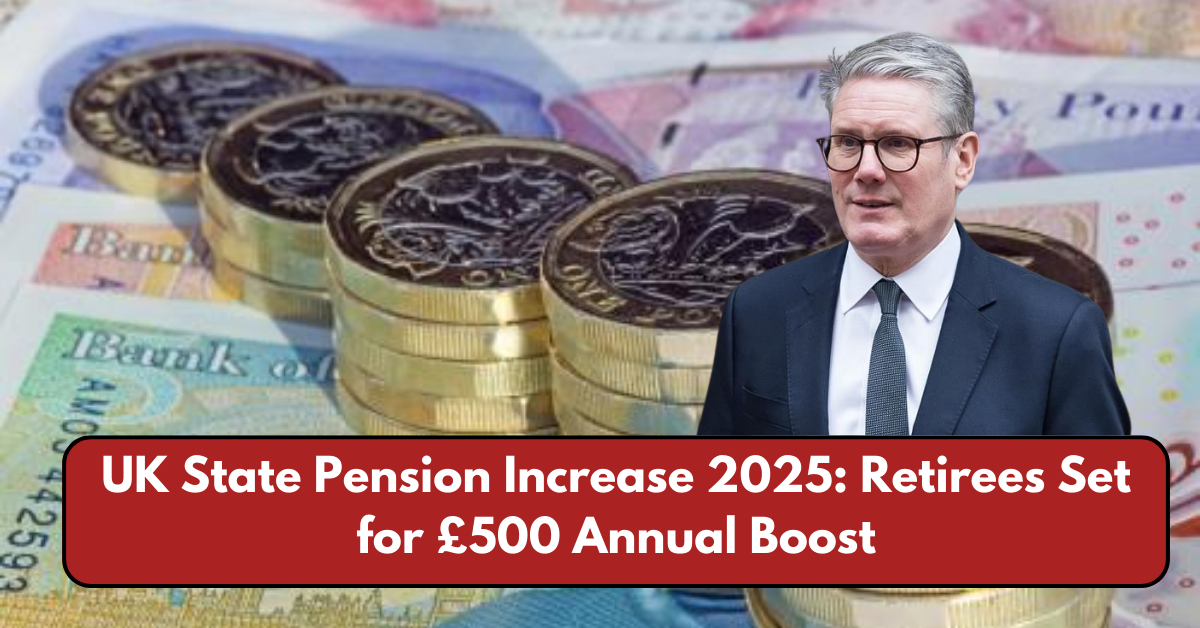The UK government has confirmed an increase in the State Pension for 2025, giving retirees an extra financial boost. Under the ‘triple lock’ policy, pensioners will see their payments rise by 4.1% from April 2025, meaning those on the full new State Pension will receive nearly £500 more annually.
State Pension Increase: What Retirees Need to Know
The State Pension increase is part of the UK government’s commitment to maintaining pensioners’ financial security amid rising living costs. The ‘triple lock’ ensures that pensions rise each year by the highest of three measures:
- Average earnings growth
- Consumer Prices Index (CPI) inflation
- A minimum of 2.5%
For 2025, the increase is based on September 2024’s inflation figure, which has resulted in a 4.1% rise. This means pensioners will see a boost in their weekly payments, helping to offset the impact of inflation and rising expenses.
How Much More Will Pensioners Receive?

From April 2025, pensioners will see the following changes:
- The full new State Pension will rise from £221.20 to £230.25 per week, equating to an extra £490 annually.
- The full basic State Pension (for those who retired before April 2016) will increase from £169.50 to £176.45 per week, providing an additional £361 annually.
Pensioners who receive less than the full State Pension due to insufficient National Insurance contributions will see proportional increases in line with the 4.1% rise.
What About Pension Credit?
Alongside the State Pension increase, Pension Credit—a benefit designed to support retirees on low incomes—will also rise by 4.1%. Pension Credit provides additional financial help to those struggling with living costs and ensures a minimum income level for older people.
For further details on Pension Credit eligibility and application processes, visit the UK Government’s official website.
Why Is the Triple Lock Important?
The triple lock mechanism was introduced in 2010 to protect pensioners from stagnating incomes. Without it, pensions could fail to keep up with inflation or wage growth, reducing retirees’ spending power over time.
However, the policy has been a subject of debate, with concerns about long-term affordability. While some economists argue that sustaining the triple lock could put pressure on public finances, pensioners’ advocates highlight its importance in ensuring older citizens can maintain a decent standard of living.
How Can Pensioners Maximise Their State Pension?

To receive the full new State Pension, individuals need at least 35 qualifying years of National Insurance contributions. Those with gaps in their contributions can consider:
- Voluntary National Insurance Contributions: If eligible, pensioners can pay voluntary contributions to fill gaps in their record.
- Checking Pension Forecasts: The UK government provides an online pension forecast tool to help individuals understand their expected pension amount.
- Deferring the State Pension: Postponing pension claims can lead to higher weekly payments when eventually taken.
How to Claim the State Pension?
State Pension payments do not start automatically. Those approaching retirement age must actively claim their pension. The process can be done online, by phone, or by post.
Conclusion

The 2025 State Pension increase will provide much-needed financial relief for retirees across the UK, with payments rising by around £500 annually for those on the full new State Pension. While debates over the sustainability of the triple lock continue, this increase reflects the government’s ongoing commitment to supporting pensioners in a challenging economic climate.
For official government updates on pensions and benefits, visit www.gov.uk.
This article has been carefully fact-checked by our editorial team to ensure accuracy and eliminate any misleading information. We are committed to maintaining the highest standards of integrity in our content.

Premlata is a seasoned finance writer with a keen eye for unraveling complex global financial systems. From government benefits to energy rebates and recruitment trends, she empowers readers with actionable insights and clarity. When she’s not crafting impactful articles, you can find her sharing her expertise on LinkedIn or connecting via email at [email protected].




